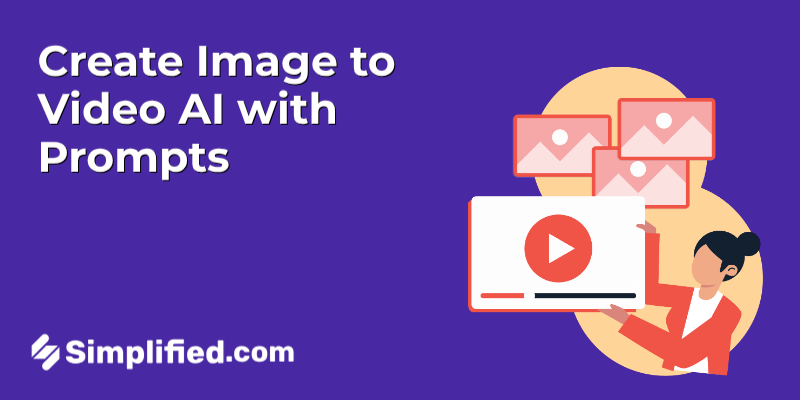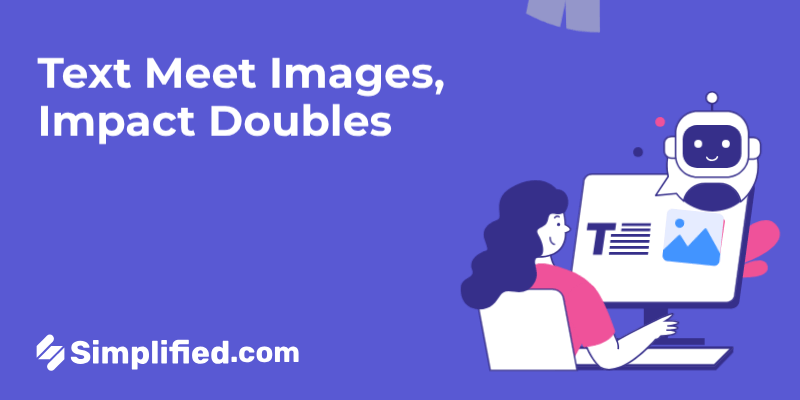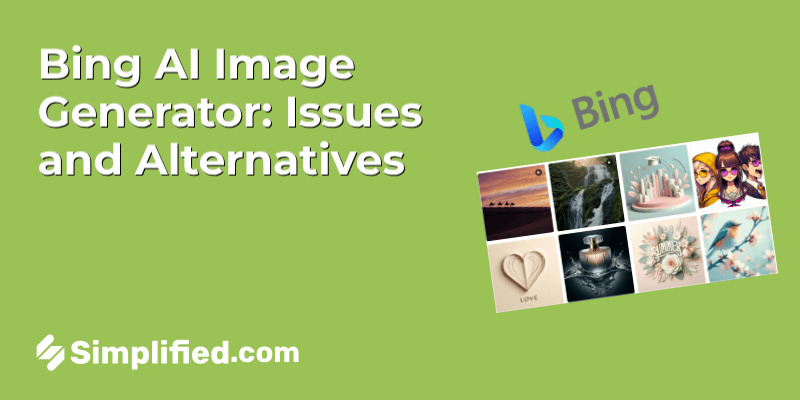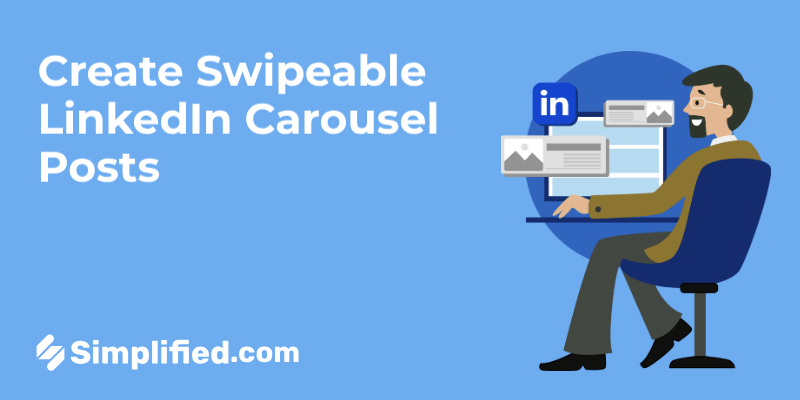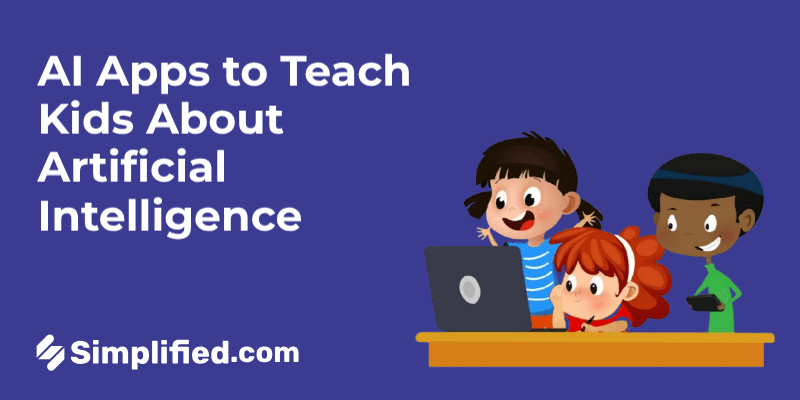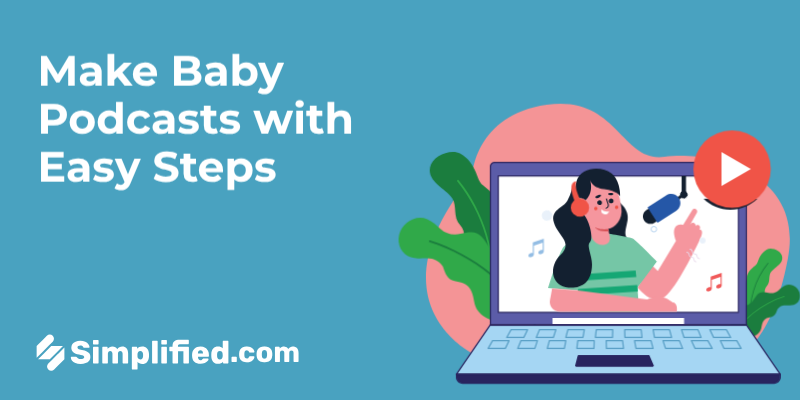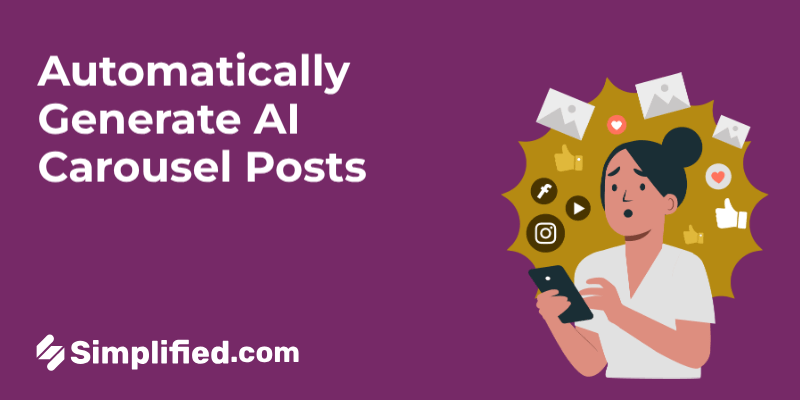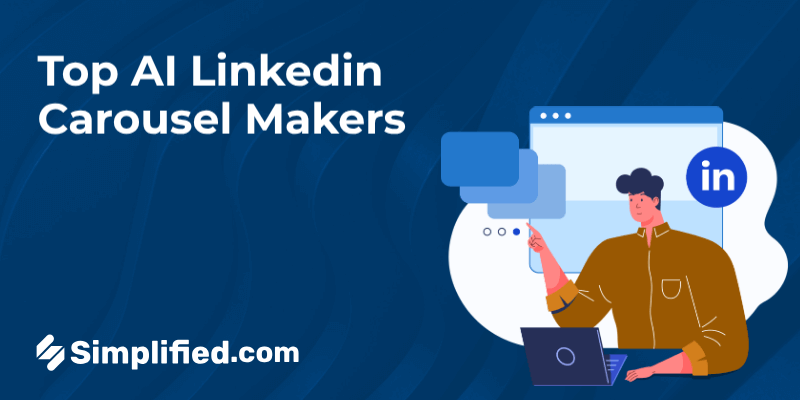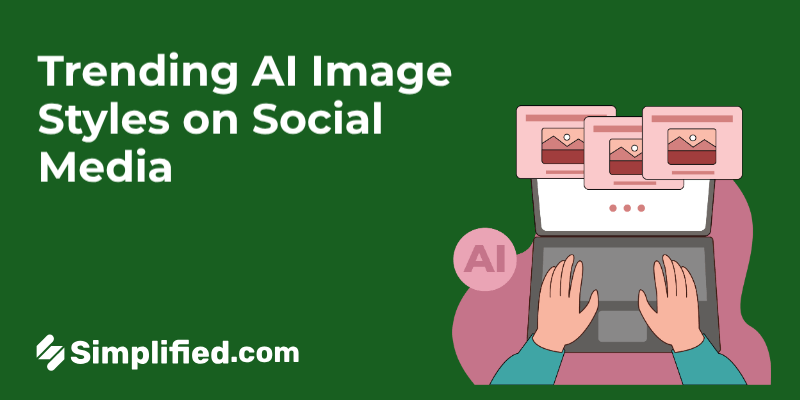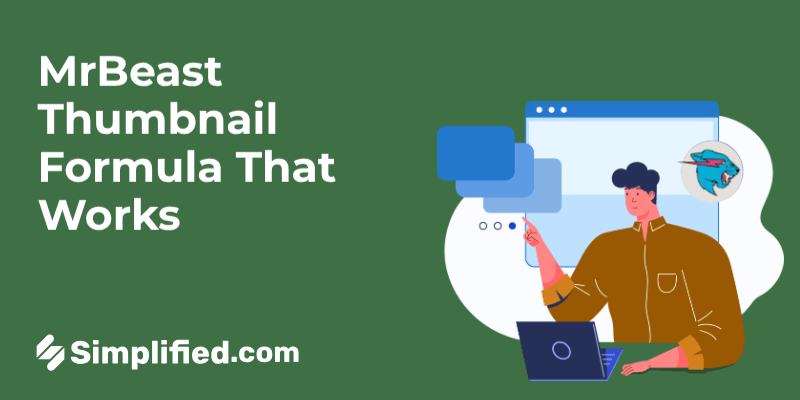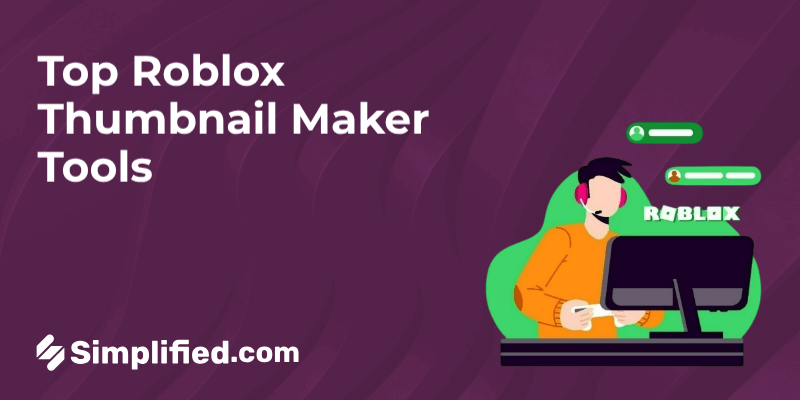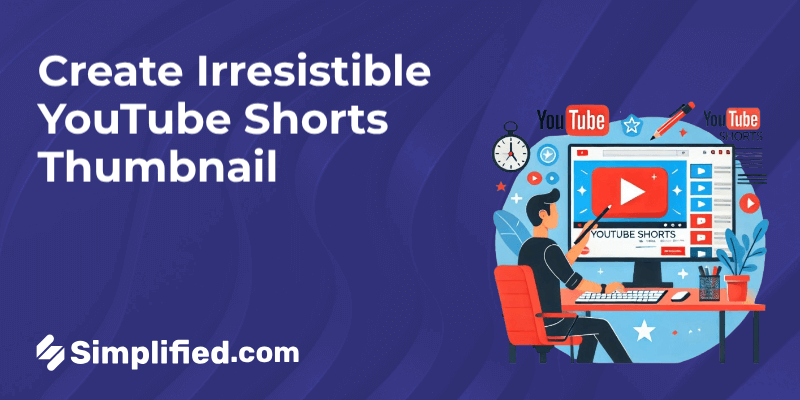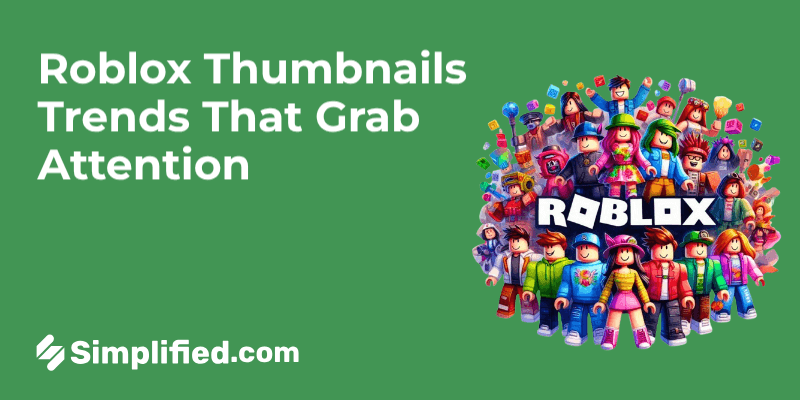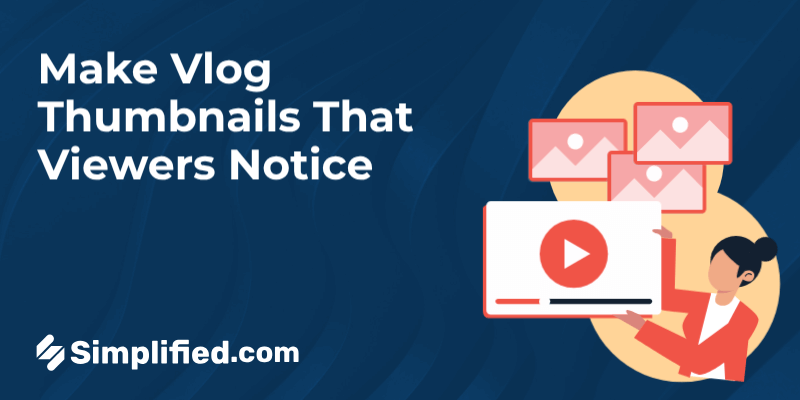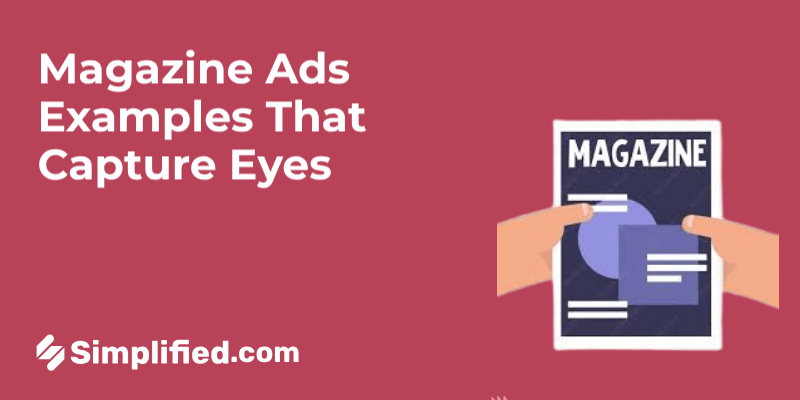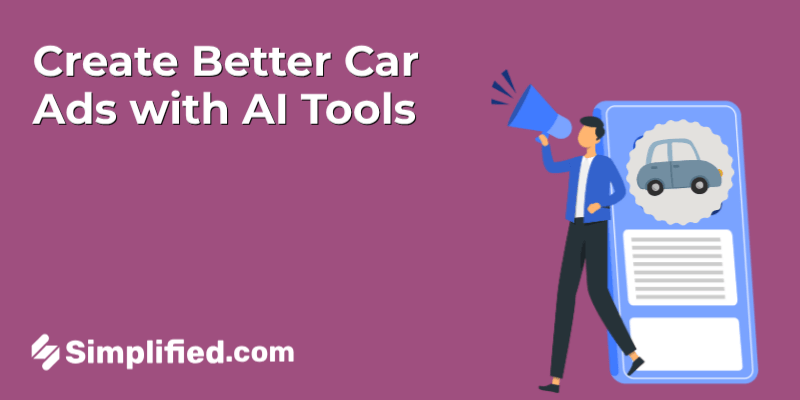
Scroll past a thousand digital ads and you’ll barely remember one. But the right print ad—just one clever visual—can stick with you for years.
Like McDonald’s “We Deliver” ad: a single fry shaped like a location pin on a red background. No words, no logo—just smart design doing all the talking.
Print ads win when they’re bold, minimal, and thoughtful. They don’t rely on noise. They rely on good ideas.
In this blog, you’ll see 60 of the smartest print ads techniques that make them unforgettable. Better yet, we’ll show you how to apply these ideas yourself—whether you’re creating for a brand, a campaign, or your own side hustle.
The Psychology Behind a Great Print Ad
Great print ads don’t just look good—they feel smart. That’s because they tap into how our brains work. When an ad resonates, it’s usually doing a few psychological things at once:
1. Visual Curiosity
Our brains are wired to notice contrast, patterns, and unexpected visuals. A clever twist—like using white space to form a hidden image—sparks curiosity and makes us pause. That moment of discovery? It sticks.
🧠 Example: The WWF “Give a Hand to Wildlife” ad shows an elephant shaped entirely from painted human hands. The visual surprise makes you look again—and care more.
2. Emotional Triggers
Ads that connect emotionally are more memorable. Humor, shock, nostalgia, or even discomfort can all work—as long as they serve the message. People remember what they feel.
🧠 Example: The Crisis Relief campaign with the tagline “Liking isn’t helping” uses powerful imagery of disaster zones with social media icons. It’s uncomfortable—but unforgettable.
3. Simplicity = Clarity
Busy ads get ignored. But a focused idea with a clean layout can speak volumes. It’s not about saying more—it’s about saying one thing well.
🧠 Example: Volkswagen’s “Think Small” campaign is still legendary for this. Just a small Beetle on a huge white page. Minimal design, maximum impact.
Bonus: 20 Captivating Facebook Ad Examples
4. Cognitive Closure
Humans like to complete unfinished thoughts or visuals. Smart ads use this to their advantage—showing just enough for the brain to “solve” the image or idea. That little reward makes the ad more engaging.
🧠 Example: The FedEx logo has a hidden arrow in the negative space. Once you see it, you never unsee it. It becomes part of the brand’s brilliance.
60 Genius Print Ads Techniques (with Real Examples)

CATEGORY 1: Visual Simplicity & Minimalism
This section focuses on how less can say more in brilliant ways. These ads rely on strong design and clever thinking without clutter or noise.
1. Use of Negative Space
Why it works: It forces the viewer to complete the image mentally, making the ad more engaging and memorable.
Example:
WWF “Preserve Their Habitat”
The black and white panda is formed entirely using negative space, making the viewer see the animal and what’s missing.
Tip to try: Start your design in black and white, and experiment with shapes that form secondary visuals.
2. One-Color Dominance
Why it works: Using a single dominant color helps create a mood, enforce brand identity, or make contrast stand out more.
Example:
McDonald’s “Fry as Location Pin” Ad
A red background and a golden fry. That’s it. The red says “McDonald’s” without needing the logo.
Tip to try: Pick one bold brand color and build the ad around it. Strip away anything that doesn’t match.
Bonus: 9 Tips & Tools To Write Killer Google Ads Descriptions
3. Small Object, Big Message
Why it works: A tiny object in a large space draws attention and signals minimalism, focus, or humility.
Example:
Volkswagen “Think Small” Campaign
A tiny Beetle sits in a sea of white. The message? This small car is worth your attention.
Tip to try: Give your product space to breathe. Make people lean in to see the details.
4. Isolated Subject Focus
Why it works: It removes distractions, placing full attention on the product or message.
Example:
Apple iPod Posters
Bright colors + silhouette dancer + white earbuds = instant product recognition.
Tip to try: Shoot your subject on a plain backdrop. Use contrast or lighting to bring it forward.
5. Silent Storytelling (No Text)
Why it works: A picture that tells a story doesn’t need words. This technique depends entirely on the strength of the image.
Example:
Lego “Imagine” Campaign
A shadow of a LEGO block turns into a real object (like a plane or animal), hinting at creativity without a single line of text.
Tip to try: Create a visual that tells a story or transformation. If someone can “get it” without words, you’ve nailed it.
Bonus: 17 Tips to Navigate Facebook Ad Library for Success
CATEGORY 2: Clever Copywriting
Sometimes the smartest part of an ad isn’t the image—it’s the words. These print ads techniques use wit, surprise, or simplicity to make a message stick.
6. Double Meaning Headlines
Why it works: A headline with two meanings makes the reader pause—and think.
Example:
The Economist: “I never read The Economist.” – Management Trainee. Aged 42.
Source: “I never read The Economist.” poster by Ron Brown – Victoria and Albert Museum
It’s both a burn and a call to action. You read it, and immediately get it.
Tip to try: Use irony or a contradictory statement that flips meaning halfway through.
7. Wordplay & Puns
Why it works: A clever pun can create humor and brand memorability.
Example:
Snickers: “You’re not you when you’re hungry.”
A simple pun that turned into a worldwide campaign.
Tip to try: Use double meanings or brand-related word twists that surprise and delight.
8. Unexpected Comparisons
Why it works: Comparing your product to something unrelated—yet strikingly similar—makes the message more memorable.
Example:
Duracell Batteries ad showing a toy going and going, while others collapse.
Duracell compares its staying power to a race.
Tip to try: Think of metaphors that explain your product through a surprising comparison.
9. Reverse Psychology
Why it works: Telling someone not to do something makes them want to look closer.
Example:
Volkswagen ad: “Don’t buy this jacket” (Patagonia)
Actually promoting conscious consumption—got huge buzz.
Tip to try: Use a bold command that defies expectation, then explain it.
10. Minimal Text with Maximum Punch
Why it works: A short phrase can carry weight—especially when paired with a strong visual.
Example:
WWF: “Give a hand to wildlife.”
An image of a hand forming into an animal shape makes the short line emotionally powerful.
Tip to try: Use fewer than seven words. Make every one count.
Bonus: Meta Ad Library: An In-Depth Look Into The Facebook Ad Library
CATEGORY 3: Visual Metaphors
These print ads techniques turn abstract ideas into visual concepts—making something intangible feel real and relatable.
11. Visual Wordplay
Why it works: The image itself acts like a pun or a clever twist that mirrors the headline or product benefit.
Example:
Colgate Dental Floss ad showing corn stuck between buildings like teeth.
The visual is the message—no extra text needed.
Tip to try: Find everyday items that can symbolize your product’s effect or pain point.
12. Object Transformation
Why it works: Showing one thing morphing into another draws attention and suggests a powerful outcome.
Example:
Lego ad: A simple block casts a shadow of a dinosaur or spaceship.
It turns imagination into something tangible.
Tip to try: Ask: What does my product unlock in someone’s life? Show that transformation visually.
13. Surreal Imagery
Why it works: Blending realism and fantasy surprises the viewer and creates lasting impact.
Example:
Keloptic glasses ad: Blurry impressionist painting becomes crystal-clear with glasses on.
Art meets reality. A metaphor with flair.
Tip to try: Combine two visuals—real and altered—to show contrast and improvement.
14. Exaggeration to Make a Point
Why it works: Going over the top grabs attention and makes the benefit unforgettable.
Example:
Pepsi Light ad: A man floating upward, so light he defies gravity.
Silly? Yes. Effective? Also yes.
Tip to try: Take your product benefit to the extreme. It’s not realism—it’s resonance.
15. Product = Unexpected Object
Why it works: Replacing your product with something unusual shows the function in a whole new way.
Example:
Heinz ad: A slice of ketchup in place of a tomato.
It communicates “natural ingredients” with zero words.
Tip to try: Visually swap your product with something symbolic of quality, benefit, or fun.
Bonus: YouTube Shorts Ads: Campaign Structure, Bidding & Creative Tips
CATEGORY 4: Emotional Impact
These print ads techniques aim straight at the heart. They trigger empathy, nostalgia, guilt, or joy—because when people feel something, they remember it.
16. Shock Value for Awareness
Why it works: Sometimes a hard truth hits harder than a soft message. Shock can drive urgency.
Example:
Bangalore Traffic Police: A cigarette turning into a tailpipe, showing pollution = smoking.
It forces you to confront a harsh reality in one image.
Tip to try: Use juxtaposition—take something everyday and twist it with a consequence or truth.
17. Childhood Nostalgia
Why it works: Childhood memories are emotionally charged and universally relatable.
Example:
Barbie “Imagine the Possibilities” Campaign
Kids role-playing grown-up careers reminds us of the importance of imagination.
Tip to try: Link your message to a universal childhood emotion—innocence, dreams, or wonder.
18. Humor with a Heart
Why it works: When ads make people smile, they’re more likely to remember the brand—especially when humor connects to something real.
Example:
Pedigree: “A dog makes your life happier. Adopt.”
A split photo: a sad guy on one side, same guy laughing on the other—with a dog.
Tip to try: Show an emotional transformation with just one change: your product.
19. Before & After Emotional States
Why it works: More than physical change, emotional transformation makes the audience imagine their own life “after.”
Example:
Weight Watchers: “If you’re happy and you know it…”
Features only hands clapping—no faces. Simple, human, emotional.
Tip to try: Visualize life before and after—through expressions, color, body language.
20. Empathy Through Storytelling
Why it works: Great ads tell micro-stories that make people care.
Example:
Amnesty International: A man holding a photo of himself smiling while standing in war-torn ruins.
One image. A whole story.
Tip to try: Think “human-first.” Show a face, a gesture, or a moment of real life that resonates with your message.
Bonus: 7 Tips to Help You Write Facebook Ads Headlines
CATEGORY 5: Smart Typography & Layout
Typography is more than just choosing a font—it’s about how the words on the page or screen interact with the overall design. As one of the classic print ads techniques, strong typography sets the tone, highlights key messages, and guides the reader’s eye in a way that feels intentional and engaging. A clever layout can completely shift the focus or mood of an ad
21. Typography as a Visual Element
Why it works: When typography becomes a visual element, it turns text into an integral part of the design, not just a vehicle for the message.
Example:
Nike: “Just Do It”
The slogan is bold, simple, and almost a design element itself. The typography is the voice of the brand.
Tip to try: Experiment with font sizes, styles, or even hand-drawn lettering. Make your typography visually exciting, not just readable.
22. Breaking the Grid
Why it works: A grid layout organizes the ad, but sometimes, breaking it creates a surprising impact, pulling the viewer’s focus to the most important part of the ad.
Example:
The New York Times: “The Truth is Hard to Find”
The text is arranged to break the grid. It emphasizes the chaotic nature of the content within, perfectly mirroring the message.
Tip to try: Don’t be afraid to break the boundaries. Let the visual flow push through the lines or boxes.
23. Text Over Image (Not Overwhelming)
Why it works: Putting text over an image gives depth to the ad, but balancing it is crucial. Too much text, and the image loses its impact.
Example:
National Geographic: Stunning photograph of a whale, overlaid with minimal text.
Text is concise, and the focus stays on the image, making the message unforgettable.
Tip to try: Overlay your most important message, but keep it short. Let the image do the storytelling.
24. Contrast for Emphasis
Why it works: When certain parts of your ad contrast sharply—whether through color, size, or texture—it creates emphasis and draws the eye.
Example:
Coca-Cola: Classic bottle in red against a white background.
The contrast between the bold red and stark white draws attention directly to the iconic bottle.
Tip to try: Use color contrast, or size disparity, to make key elements pop.
25. Hierarchy in Typography
Why it works: A clear hierarchy in text tells the viewer where to look first and what to pay attention to.
Example:
The Guardian: “Our Stories. Our Truth”
A headline in bold followed by a subtext creates a clear visual pathway.
Tip to try: Use font size, weight, and placement to guide the viewer’s eyes through the ad, ensuring the key message stands out.
Bonus: YouTube Shorts Vs TikTok Ads: Where Should You Advertise?
CATEGORY 6: Innovative Product Placement
In this section, we’ll explore how to cleverly incorporate the product into the design of the ad—one of the more creative print ads techniques that makes the product feel like an organic part of the message rather than something simply “tacked on.”
26. Product as the Hero
Why it works: Instead of just showing the product, make it the focal point, giving it more personality, or even making it the “star” of the ad.
Example:
Apple iPod: A silhouette of a person dancing with the iPod.
The iPod is central to the action, and it’s clear that the product is the source of the joy and energy in the ad.
Tip to try: Give your product the spotlight. Make it an essential part of the narrative, rather than just a background object.
27. Hidden Product Integration
Why it works: When you cleverly hide or blend the product into the background or visual story, it becomes part of the environment, creating a fun surprise when the viewer spots it.
Example:
Toblerone Chocolate: Packaging forming the shape of a mountain.
It’s not just a chocolate bar—it’s a scenic mountain, reinforcing the brand’s Swiss heritage.
Tip to try: Hide your product in plain sight. When people notice it, they feel clever and engaged.
28. Life-Size Product Replicas
Why it works: Creating a larger-than-life version of the product can make it more striking, showcasing its features or making the ad more memorable.
Example:
Guinness: A giant pint glass being poured into a real glass.
A playful, memorable ad that used size to make the product more prominent and engaging.
Tip to try: Play with proportions—use scale to magnify the importance of your product or make it part of a visual gag.
29. Product as a Tool for Transformation
Why it works: Showing the product being used to transform a person, situation, or space allows the viewer to imagine the impact it could have on their own life.
Example:
Dyson Vacuum: A simple vacuum that’s made to seem powerful enough to clean everything.
They show dirt disappearing as soon as it touches the machine.
Tip to try: Show the product solving a common problem, transforming the user’s world in the process.
30. Interactive Product Design
Why it works: When the product design encourages interaction or a new way of looking at it, it invites the audience to engage more deeply with the message.
Example:
Coca-Cola: Bottles designed to resemble various faces.
It invites people to interact with the product, creating a playful connection.
Tip to try: Use your product’s design to create a moment of interaction. It doesn’t have to be literal; it could be an illusion or a play on perspective.
Bonus: 25 Exemplary Facebook Carousel Ads Examples To Inspire Your Marketing Strategy
CATEGORY 7: Unexpected Use of Color
Color is more than just a design choice—it’s an emotional trigger. As one of the powerful print ads techniques, the right color can make your ad stand out, evoke emotion, and even tell a deeper story without a single word. Let’s look at how unexpected color choices can make your ad pop.
31. Bold Color Choices to Command Attention
Why it works: Using bold, saturated colors can make your ad jump off the page. When used strategically, they demand attention and instantly set the tone of the message.
Example:
IKEA: Bold yellow and blue background, drawing attention to a simple product.
The high contrast in color instantly makes it impossible to ignore.
Tip to try: Use contrasting, vibrant colors for a high-energy feel that grabs attention from a distance.
32. Minimalistic Color Palette for Impact
Why it works: Sometimes, less is more. A limited color palette makes the message feel cleaner and more sophisticated, allowing the product or message to shine without distraction.
Example:
Apple: White and black ads, highlighting only the product.
The simplicity of the ad makes the product the sole focus, with no visual distractions.
Tip to try: Limit yourself to two or three key colors. Let those colors define the mood, without overwhelming the ad.
33. Contrasting Color to Highlight Key Details
Why it works: Using contrasting colors for specific elements in the ad—like a call to action or important features—is one of the most effective print ads techniques to guide the viewer’s eyes to exactly where you want them to look.
Example:
FedEx: Purple and orange color contrast in the logo.
The use of contrasting colors immediately highlights the brand, making it memorable.
Tip to try: Choose contrasting colors for your headline or CTA to make it impossible for the viewer to miss.
34. Color Psychology to Convey Emotion
Why it works: Colors evoke emotions, and when you use them wisely, you can influence how people feel about your brand or product.
Example:
Coca-Cola: Red color used to convey excitement, passion, and energy.
The red in Coca-Cola’s ads conveys happiness and energy, making it feel vibrant and active.
Tip to try: Use colors that resonate with the emotion you want your audience to feel. Blue for trust, green for calm, red for energy, etc.
35. Color Blocking for Bold Contrast
Why it works: Using large blocks of color can help break up the design, making it easier to highlight specific parts of the ad, while also giving the ad a modern and trendy look.
Example:
Google: Color blocking in their advertisements for new products.
The color blocks separate different features or calls to action while creating a sleek, cohesive look.
Tip to try: Use large blocks of one color to give your ad a modern, clean look, while keeping the design balanced and readable.
Bonus: The Ultimate Guide to Designing Facebook Ads
CATEGORY 8: Creating Intrigue with Negative Space
Negative space, or the area around and between the subject of an image, is one of the most effective print ads techniques. When used creatively, it can add depth, tell a story, or create visual interest.
36. Using Negative Space to Create Hidden Imagery
Why it works: Negative space can be used to create hidden images within an ad, leading the viewer to discover something unexpected. This adds an element of surprise and engagement.
Example:
WWF: The use of negative space to create animal shapes.
The clever use of negative space makes it seem like an animal is emerging from the background, reinforcing their environmental message.
Tip to try: Look for areas of your design where negative space can be used to subtly reveal a product or message that’s not immediately obvious.
37. Playful Use of Negative Space
Why it works: Sometimes, using negative space in a playful or cheeky way can make your ad memorable and enjoyable. These creative print ads techniques grab attention, add personality, and offer a bit of fun—all without cluttering the design.
Example:
Adidas: A sneaker with negative space forming the shape of a soccer ball.
The playful use of negative space makes the ad visually interesting and ties the product back to the core of the brand.
Tip to try: Experiment with different shapes and forms that can be subtly integrated into the background to reinforce the theme or message.
38. Creating Depth Through Negative Space
Why it works: Negative space can also create the illusion of depth, giving the ad a more dynamic, 3-dimensional feel without cluttering the design.
Example:
Apple: Clean, minimalist ads with lots of space around the product.
The space around the product helps draw focus to the object while making it feel elevated and important.
Tip to try: Keep your design clean and allow for empty space to create a sense of balance and focus.
39. Negative Space as a Storytelling Device
Why it works: Negative space can also be used to tell a deeper story or add context, making the ad not only visually interesting but meaningful.
Example:
UNICEF: The negative space around the child’s face forms a symbolic image, such as a tear or the outline of a hand.
This design conveys a deeper emotional connection to the message.
Tip to try: Think of ways negative space can add an additional layer of meaning to your ad. Is there a symbol or story you can suggest using the space?
40. Integrating Text into Negative Space
Why it works: Instead of placing text directly onto a busy background, try integrating your text into the negative space. This approach is one of the subtle yet effective print ads techniques that gives the ad a sleek, modern feel and lets the message breathe.
Example:
The New York Times: Bold headline set against negative space.
The text is integrated into the design, making it appear as part of the overall image rather than an afterthought.
Tip to try: Consider placing your text within the negative space of an image, making it part of the visual puzzle.
Bonus: 14 Tips To Create Google Ads Headlines
CATEGORY 9: Clever Visual Metaphors
Metaphors, as some of the best print ads techniques, can link your product to broader, often emotional, themes. A well-executed visual metaphor adds depth to your ad, encouraging viewers to make connections they might not have initially considered.
41. Visual Metaphors for Simplicity and Clarity
Why it works: A metaphor can simplify complex ideas by using familiar images that make the message easier to understand, all while making the ad visually engaging.
Example:
Apple: The use of a simple, clean apple to symbolize knowledge and creativity.
This visual metaphor highlights the idea of “getting a bite of knowledge” or “thinking outside the box.”
Tip to try: Think about your product’s core benefit and how you can represent it using simple, relatable imagery.
42. Using Metaphors to Convey Speed and Efficiency
Why it works: Speed and efficiency are powerful selling points for many products, and using metaphors can quickly convey these qualities in a way that feels dynamic and exciting.
Example:
FedEx: A plane with speed lines zipping across the ad, representing the speed of delivery.
The metaphor of a fast-moving airplane connects the service to quick delivery.
Tip to try: Find visual metaphors that communicate the speed or efficiency of your product—whether it’s a cheetah, lightning bolt, or rocket.
43. Nature-Based Metaphors for Reliability and Trust
Why it works: Nature-related metaphors can convey reliability, stability, and trustworthiness—attributes that customers value in products or services.
Example:
Toyota: A solid tree to symbolize their sturdy, reliable vehicles.
The metaphor of a tree rooted firmly in the ground emphasizes the long-lasting quality of their cars.
Tip to try: Use natural imagery, like mountains or trees, to represent your product’s reliability or durability.
44. Metaphors for Problem-Solving or Transformation
Why it works: A metaphor that represents your product as a “solution” can effectively position it as the answer to a common problem or challenge.
Example:
Vicks: A depiction of a cold transforming into clear air, showing how their product clears your sinuses.
The visual metaphor of transformation emphasizes the product’s power to solve a common problem.
Tip to try: Consider how your product transforms the customer’s situation and use that transformation in your metaphor.
45. Humorous Metaphors to Create a Memorable Impression
Why it works: Humor can make your ad more memorable. By using witty or clever metaphors, you engage the audience’s attention and create an emotional connection through laughter.
Example:
M&M’s: The use of “melts in your mouth, not in your hand” with colorful characters representing the candy.
The playful metaphor makes the product feel more fun and relatable, while still emphasizing the key feature.
Tip to try: Use humor and metaphors together to not only entertain but also reinforce the core message of your ad.
Bonus: How To Search For A Creative Template Design For Your Brand Plus Examples
CATEGORY 10: Immersive Reality Print Advertising
This category explores how print ads can bridge the physical and digital worlds by creating immersive experiences that defy the traditional limitations of paper. These print ads techniques transform static print media into gateways for rich, interactive brand experiences.
46. Dimensional Reality Portals
Why it works: Creating the illusion that a flat page opens into a three-dimensional world makes viewers stop and engage more deeply with the ad.
Example: Audi ad where the page appears to fold open, revealing a photorealistic 3D showroom that seems to extend below the surface of the magazine.
Tip to try: Use advanced perspective techniques and trompe-l’oeil effects to make flat surfaces appear to contain physical spaces.
47. Physical-Digital Bridging
Why it works: Easily connecting print and digital experiences creates a continuous brand journey that starts on paper but extends far beyond it.
Example: National Geographic ad with embedded NFC chip that instantly launches an immersive wildlife experience when tapped with a smartphone.
Tip to try: Design your print ad as the first chapter of a larger story that continues digitally, using visual cues that guide viewers from print to screen.
48. Illusion-Based Perspective Advertising
Why it works: Ads designed with precise optical perspective tricks appear completely different when viewed from specific angles or distances, revealing secondary messages or visuals that create memorable “discovery moments.”
Example: Anti-smoking campaign billboard that shows a healthy person when viewed from a distance, but reveals deteriorated lungs when approached closely, creating a powerful metaphor for the hidden dangers of tobacco.
Tip to try: Design dual-image ads where the primary message transforms into a different, complementary message based on viewing distance or angle, reinforcing your key point through the revelation itself.
49. Optical Illusion Integration
Why it works: Precisely engineered optical illusions create movement and dimension in static images, making viewers physically interact with the ad to see the full effect.
Example: Nike running shoes ad with lenticular printing that shows a runner in motion as you walk past, demonstrating speed and dynamics.
Tip to try: Incorporate moiré patterns, lenticular effects, or parallax illusions that reveal different images depending on viewing angle.
50. Sensory Synchronization
Why it works: Engaging multiple senses simultaneously creates deeper memory imprints and stronger emotional connections to brands.
Example: Coffee brand ad with microencapsulated aroma that releases when warmed by touch, while an embedded audio chip plays the sound of brewing coffee when the page is opened.
Tip to try: Combine visual elements with touch-activated scents, sounds, or textures that create a multisensory brand experience.
Bonus: Create Scroll-Stopping Ads—AI Writes, Designs & Delivers for You
CATEGORY 11: Powerful Call to Action
A call to action (CTA) is the final nudge you give your audience—one of the most essential print ads techniques for driving results. Whether it’s making a purchase, signing up, or simply learning more, the CTA often serves as the make-or-break element of a print ad. To be effective, it needs to stand out through smart use of design, placement, and language—making it clear, compelling, and hard to ignore.
51. Using Action-Oriented Verbs in Your CTA
Why it works: Action verbs prompt the viewer to take immediate action. A CTA like “Buy Now” or “Discover More” directly tells the audience what they need to do, making it clear and straightforward.
Example:
Amazon: “Shop Now” with a simple, bold design.
This CTA is clear, concise, and actionable, making it easy for the audience to know what to do next.
Tip to try: Use strong action verbs like “Shop,” “Buy,” “Learn,” “Join,” or “Get Started” to make your CTA more compelling.
52. Creating Urgency in Your CTA
Why it works: Adding a sense of urgency can drive immediate action. Words like “Limited Time Offer” or “Act Fast” create a fear of missing out (FOMO) that encourages quicker decision-making.
Example:
H&M: “Sale Ends Soon” with a countdown timer in the ad.
The sense of urgency compels customers to act before they miss the opportunity.
Tip to try: Use urgency-driven phrases like “Hurry!” or “Ends Soon” to create a time-sensitive action.
53. Making Your CTA Stand Out Visually
Why it works: Your CTA should be easy to find and hard to ignore. Making it visually distinct (through color, size, or placement) ensures that it captures attention and stands out from the rest of the content.
Example:
Spotify: “Get Premium” button in bright green.
The contrast between the button and the background makes the CTA impossible to miss.
Tip to try: Use contrasting colors or place your CTA in a prominent spot—like the bottom center of your ad—to increase its visibility.
54. Focusing on the Benefit of the CTA
Why it works: Instead of simply telling the viewer to act, focus on the benefit they will gain by doing so. A CTA like “Sign up for Free” highlights the immediate advantage to the customer.
Example:
Dropbox: “Get Started – Free” CTA with a focus on the zero-cost value.
By highlighting the free offering, Dropbox reduces the barrier to entry and encourages users to try the service.
Tip to try: Add value to your CTA by showing the customer what they’ll get from clicking, whether it’s a free trial, a special offer, or an exclusive experience.
55. Keep Your CTA Short and Sweet
Why it works: A CTA should be clear and easy to understand at a glance. Long-winded phrases can dilute the message, while short and punchy CTAs get straight to the point.
Example:
Nike: “Just Do It” is short, motivational, and action-oriented.
This CTA works because it is simple and impactful, urging immediate action without overcomplicating things.
Tip to try: Keep your CTA concise, ideally 2–4 words. Focus on making it simple and compelling so your audience knows exactly what to do.
CATEGORY 12: Utilizing Color Psychology
Color isn’t just for decoration; it plays a powerful role in influencing emotions and behavior. In print advertising, using the right colors can help evoke specific feelings, create a sense of urgency, or even increase brand recognition. Understanding color psychology can improve your ad design and make it more effective.
56. Using Red for Urgency and Excitement
Why it works: Red is a color of urgency, energy, and excitement. It grabs attention quickly and can create a sense of urgency or even stimulate action.
Example:
Coca-Cola: The iconic red logo.
Red is used to evoke feelings of passion, excitement, and energy, making the brand stand out and feel dynamic.
Tip to try: Use red for sales promotions, limited-time offers, or to draw attention to specific CTAs.
57. Using Blue for Trust and Professionalism
Why it works: Blue is commonly associated with trust, stability, and professionalism. Many corporate brands use blue to communicate reliability and security.
Example:
IBM: The blue color in their branding conveys professionalism and trustworthiness.
This makes customers feel more secure when dealing with the brand, especially in industries like technology and finance.
Tip to try: Incorporate blue into ads for products or services that emphasize reliability, security, or trustworthiness.
58. Using Yellow for Optimism and Attention-Grabbing
Why it works: Yellow is often associated with happiness, optimism, and creativity. It’s an perfect color that can be used to highlight important information or create a sense of positivity.
Example:
McDonald’s: The yellow arches symbolize warmth, happiness, and energy.
This bright color invokes feelings of joy and is instantly recognizable, attracting attention from a distance.
Tip to try: Use yellow for ads that aim to uplift, inspire, or draw attention to a special offer.
59. Using Green for Health and Growth
Why it works: Green is the color of nature, growth, and health. It’s often used to promote wellness products, environmentally friendly initiatives, and sustainable practices.
Example:
Whole Foods: Green branding that emphasizes natural, healthy, and organic foods.
Green connects with consumers on a subconscious level, reinforcing the idea of health and sustainability.
Tip to try: Use green in your ads if your product promotes health, eco-friendliness, or growth.
60. Using Black for Luxury and Sophistication
Why it works: Black conveys sophistication, luxury, and exclusivity. It’s a powerful color used in premium branding to create a sense of elegance and high-end appeal.
Example:
Chanel: Black in their ads and product packaging reflects elegance, luxury, and timeless beauty.
The minimalist design and use of black elevate the brand’s luxurious and sophisticated image.
Tip to try: Use black in your ad to convey luxury, elegance, or exclusivity, especially for high-end products or services.
Step-by-Step Guide to Creating Your Own Genius Print Ads
1. Get Started with the AI Ads Generator Tool
Begin by logging into Simplified and navigating to the AI Ads Generator tool. If you don’t already have access, create an account to unlock the platform’s features.
2. Provide Inputs for Your Ad Campaign
By keeping these print ads techniques in mind, enter the required details to set up your ad:
- Ad Topic/Theme: Share what the ad is about (e.g., product, service, or event).
- Target Audience: Specify the demographic or audience you’re aiming to reach.
- Ad Format: Choose the ad type, such as Instagram Ads, Facebook Feed Ads, LinkedIn Ads, or Twitter Ads.
- Brand Customization: Personalize your ads using your Brandbook or tweak settings like creativity level and preferred output language.
3. Customize and Refine
Enhance your ad design with:
- Text: Edit headlines, taglines, or call-to-action messages.
- Visuals: Add or adjust images, background colors, or graphics to match your vision.
- Layout: Experiment with placement and style to create a polished, professional look.
4. Finalize and Share
Once satisfied, download your completed ad in high resolution or share it directly across your chosen platforms. Simplified makes it easy to connect with your audience instantly.
Bringing Your Print Ads to Life
Creativity and strategy are key to creating print ads that not only capture attention but also drive results. By applying the techniques we’ve covered—like color psychology, minimalism, and typography—you can design print ads that resonate with your audience and stand out in a crowded market. Now that you have 60 powerful design strategies, it’s time to implement them into your own campaigns. Whether you’re designing a flyer or a billboard, these methods will help you create print ads that are visually compelling and effective in achieving your business goals.
What about you? We’d love to hear about your favorite print ads or how you’ve used these print ads techniques in your own work. Share your experiences in the comments, and let’s continue the conversation to inspire even more great ad designs!

